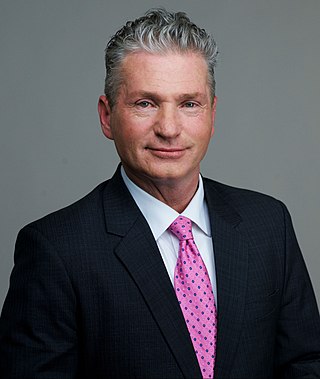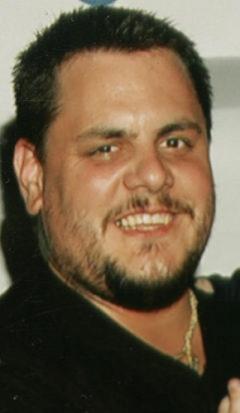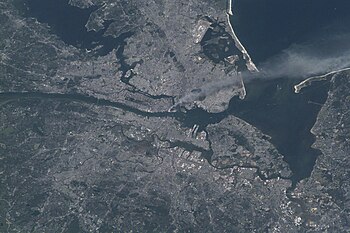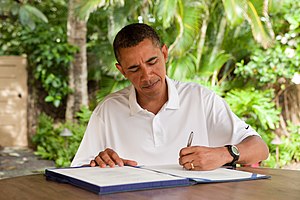
The September 11 attacks on the World Trade Center elicited a large response of local emergency and rescue personnel to assist in the evacuation of the two towers, resulting in a large loss of the same personnel when the towers collapsed. After the attacks, the media termed the World Trade Center site "Ground Zero", while rescue personnel referred to it as "the Pile".

The September 11 attacks transformed the first term of President George W. Bush and led to what he referred to as the war on terror. The accuracy of describing it as a "war" and its political motivations and consequences are the topic of strenuous debate. The U.S. government increased military operations, economic measures, and political pressure on groups that it accused of being terrorists, as well as increasing pressure on the governments and countries which were accused of sheltering them. October 2001 saw the first military action initiated by the US. Under this policy, NATO invaded Afghanistan to remove the Taliban regime and capture al-Qaeda forces.

The National September 11 Memorial & Museum is a memorial and museum that are part of the World Trade Center complex, in New York City, created for remembering the September 11 attacks of 2001, which killed 2,977 people, and the 1993 World Trade Center bombing, which killed six. The memorial is located at the World Trade Center site, the former location of the Twin Towers that were destroyed during the September 11 attacks. It is operated by a non-profit institution whose mission is to raise funds to program and operate the memorial and museum at the World Trade Center site.

The World Trade Center in New York City collapsed on September 11, 2001, as result of the al-Qaeda attacks. Two commercial airliners hijacked by al-Qaeda terrorists were deliberately flown into the Twin Towers of the complex, resulting in a total progressive collapse that killed almost 3,000 people. It is the deadliest and most costly building collapse in history.

One World Trade Center, also known as One World Trade, One WTC, and formerly called the Freedom Tower during initial planning stages, is the main building of the rebuilt World Trade Center complex in Lower Manhattan, New York City. Designed by David Childs of Skidmore, Owings & Merrill, One World Trade Center is the tallest building in the United States, the tallest building in the Western Hemisphere, and the seventh-tallest in the world. The supertall structure has the same name as the North Tower of the original World Trade Center, which was destroyed in the terrorist attacks of September 11, 2001. The new skyscraper stands on the northwest corner of the 16-acre (6.5 ha) World Trade Center site, on the site of the original 6 World Trade Center. It is bounded by West Street to the west, Vesey Street to the north, Fulton Street to the south, and Washington Street to the east.

The September 11 attacks, commonly known as 9/11, were four coordinated Islamist suicide terrorist attacks carried out by al-Qaeda against the United States in 2001. That morning, 19 terrorists hijacked four commercial airliners scheduled to travel from the New England and Mid-Atlantic regions of the East Coast to California. The hijackers crashed the first two planes into the Twin Towers of the World Trade Center in New York City, two of the world's five tallest buildings at the time, and aimed the next two flights toward targets in or near Washington, D.C., in an attack on the nation's capital. The third team succeeded in striking the Pentagon, the headquarters of the U.S. Department of Defense in Arlington County, Virginia, while the fourth plane went down in rural Pennsylvania during a passenger revolt. The September 11 attacks killed 2,977 people, the deadliest terrorist attack in human history, and instigated the multi-decade global war on terror, fought in Afghanistan, Iraq, and elsewhere.
The United States Environmental Protection Agency September 11 attacks pollution controversy was the result of a report released by the Office of the Inspector General of the United States Environmental Protection Agency (EPA) in August 2003 which said the White House pressured the EPA to delete cautionary information about the air quality in New York City around Ground Zero following the September 11 attacks.
The following list contains dates beyond October 2001 involving the September 11 attacks.

Within seconds of the collapse of the World Trade Center in the September 11 attacks, building materials, electronic equipment, and furniture were pulverized and spread over the area of the Financial District of Lower Manhattan. In the five months following the attacks, dust from the pulverized buildings continued to fill the air of the World Trade Center site. Increasing numbers of New York residents are reporting symptoms of Ground Zero respiratory illnesses.

As Mayor of New York City on September 11, 2001, Rudy Giuliani played a major role in the response to the terrorist attacks against the World Trade Center towers in the city.

Stephen Cassidy was the longest serving President of the Uniformed Firefighters Association of Greater New York (UFA) in its 100-year history. He was first elected to the position in August 2002 and is the only UFA President in the union's history to be elected directly out of a firehouse. In 2016, Cassidy resigned his position as UFA President to serve as the executive director of the New York City Fire Pension Fund. In 2018, following his arrest for driving while intoxicated, New York City Fire Commissioner Daniel Nigro removed Cassidy from his position as executive director of the New York City Fire Pension Fund.

James Zadroga was a New York City Police Department (NYPD) officer who died of a respiratory disease that has been attributed to his participation in rescue and recovery operations in the rubble of the World Trade Center following the September 11 attacks. Zadroga was the first NYPD officer whose death was attributed to exposure to his contact with toxic chemicals at the attack site.
Charles Sidney Hirsch was an American forensic pathologist who served as the Chief Medical Examiner of New York City from 1989 until 2013. He oversaw the identification of victims from the World Trade Center attacks in 2001.

The September 11 attacks of 2001 were the deadliest terrorist attacks in human history, causing the deaths of 2,996 people, including 2,977 victims and 19 hijackers who committed murder–suicide. Thousands more were injured, and long-term health effects have arisen as a consequence of the attacks. New York City took the brunt of the death toll when the Twin Towers of the World Trade Center complex in Lower Manhattan were attacked, with an estimated 1,600 victims from the North Tower and around a thousand from the South Tower. Two hundred miles southwest in Arlington County, Virginia, another 125 were killed in the Pentagon. The remaining 265 fatalities included the ninety-two passengers and crew of American Airlines Flight 11, the sixty-five aboard United Airlines Flight 175, the sixty-four on American Airlines Flight 77 and the forty-four who boarded United Airlines Flight 93. The attack on the World Trade Center's North Tower alone made the September 11 attacks the deadliest act of terrorism in human history.

John Jackson Howard is an American physician, professor, and public health administrator who served a 6-year term as the director of the National Institute for Occupational Safety and Health and was appointed to be a special coordinator to respond to the health effects of the September 11 attacks. In this role, Howard advocated for rescue workers, introducing a program to provide screening, medical exams, and treatment for them. In 2009, Howard was again appointed as director of NIOSH and as World Trade Center Programs coordinator for HHS. In 2011, Howard became the Administrator of the World Trade Center Health Program. In 2016, he became the first person to be appointed to a third 6-year term as NIOSH director, and was reappointed to a fourth term in 2021.

The James Zadroga 9/11 Health and Compensation Act of 2010 is a U.S. law to provide health monitoring and aid to the first responders, volunteers, and survivors of the September 11 attacks. It is named after James Zadroga, a New York Police Department officer whose death was linked to exposures from the World Trade Center disaster. The law funds and establishes a health program to provide medical treatment for responders and survivors who experienced or may experience health complications related to the 9/11 terrorist attacks.
The following outline is provided as an overview of and topical guide to the September 11 attacks and their consequences:
Stephen M. Levin was the medical director of the Mount Sinai Irving J. Selikoff Center for Occupational and Environmental Medicine, a professor of occupational medicine at the Mount Sinai School of Medicine, and the co-director of the World Trade Center Worker and Volunteer Medical Screening Program. A graduate of Wesleyan University and then New York University School of Medicine, Levin was born and raised in Philadelphia to working-class parents—his father was a carpenter, his mother a hospital worker. He was recognized worldwide as a leader in the field of occupational medicine, particularly due to his work on behalf of 9/11 workers and those injured by asbestos in the town of Libby, Montana.

The Mount Sinai Selikoff Centers for Occupational Health are a set of occupational and environmental health clinics that focus on the prevention, diagnosis, and treatment of workplace injuries and illnesses. Significant injuries and illnesses that are treated at the clinical centers include occupational lung cancers, manganese/silica/lead exposures, and asbestos-related illness, which was the career-long research of Dr. Irving Selikoff, the centers' inaugural director. The Selikoff Centers for Occupational Health's multidisciplinary health care team includes physicians, nurse practitioners, industrial hygienists, ergonomists, social workers, and benefits specialists, who are "leaders in the prevention, diagnosis and treatment of workplace injuries and illnesses," and provide comprehensive patient-centered services in New York City and Lower Hudson Valley. The clinical centers are located within the Icahn School of Medicine at Mount Sinai under the Division of Occupational and Environmental Medicine.
Michael Alden Barasch is an American lawyer who was a chief advocate for first responders and others harmed by toxic dust in Lower Manhattan caused by the September 11 attacks. He has represented thousands of seriously injured members of the New York City Fire Department and police officers of the New York Police Department, both for their personal injuries as well as to protect their pension benefits. This includes police officer James Zadroga, who developed pulmonary fibrosis as a result of his exposure to the deadly 9/11 toxins. His death persuaded the United States Congress to pass the “James Zadroga 9/11 Health and Compensation Act.” The act reopened the first 9/11 Victim Compensation Fund (VCF) to provide benefits to those suffering with the harmful consequences of toxic exposure to the World Trade Center dust.


















